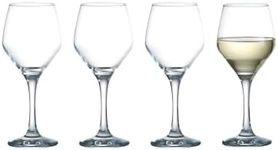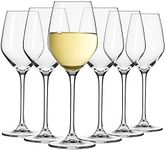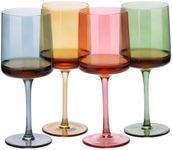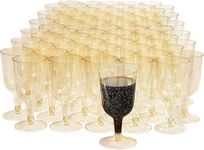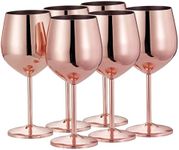Buying Guide for the Best Wine Glasses
Choosing the right wine glass can significantly enhance your wine-drinking experience. The shape, size, and material of the glass can influence the aroma, flavor, and overall enjoyment of the wine. When selecting wine glasses, consider the type of wine you usually drink, your personal preferences, and the occasions for which you'll be using the glasses. Here are some key specifications to help you make an informed decision.Glass ShapeThe shape of the wine glass is crucial because it affects how the wine's aromas are concentrated and how the wine is delivered to your palate. Red wine glasses typically have a larger, rounder bowl to allow the wine to breathe and to direct the wine to the back of the mouth. White wine glasses are usually smaller and more U-shaped to preserve the wine's cooler temperature and direct the wine to the tip and sides of the tongue. Sparkling wine glasses are tall and narrow to maintain the bubbles. Choose a shape that complements the type of wine you drink most often.
Glass SizeThe size of the wine glass can impact the wine's exposure to air, which in turn affects its aroma and flavor. Larger glasses are better for red wines as they need more room to breathe, enhancing their complex flavors. Smaller glasses are suitable for white wines, which are typically served chilled and do not require as much aeration. Sparkling wines benefit from smaller, flute-shaped glasses to keep the bubbles intact. Consider the size based on the type of wine you prefer and how much you typically pour.
MaterialWine glasses can be made from various materials, including crystal, glass, and plastic. Crystal glasses are often preferred for their thin rims and clarity, which can enhance the wine-tasting experience. They are also more delicate and require careful handling. Glass wine glasses are more durable and can be a good choice for everyday use. Plastic wine glasses are practical for outdoor events or casual gatherings but may not provide the same sensory experience as crystal or glass. Choose the material based on your usage and care preferences.
Stem vs. StemlessWine glasses can come with or without stems. Stemmed glasses are traditional and allow you to hold the glass without warming the wine with your hand. They also add an elegant touch to formal settings. Stemless glasses are more modern and casual, and they are less likely to tip over. However, they can transfer heat from your hand to the wine, which may not be ideal for certain types of wine. Consider your lifestyle and the occasions for which you'll be using the glasses when deciding between stemmed and stemless.
Rim ThicknessThe thickness of the rim can affect the drinking experience. Thinner rims are generally preferred because they allow the wine to flow smoothly into your mouth, enhancing the tasting experience. Thicker rims can feel bulkier and may interfere with the delicate flavors of the wine. If you are serious about wine tasting, opt for glasses with thin rims. For casual use, thicker rims may be more durable and practical.

